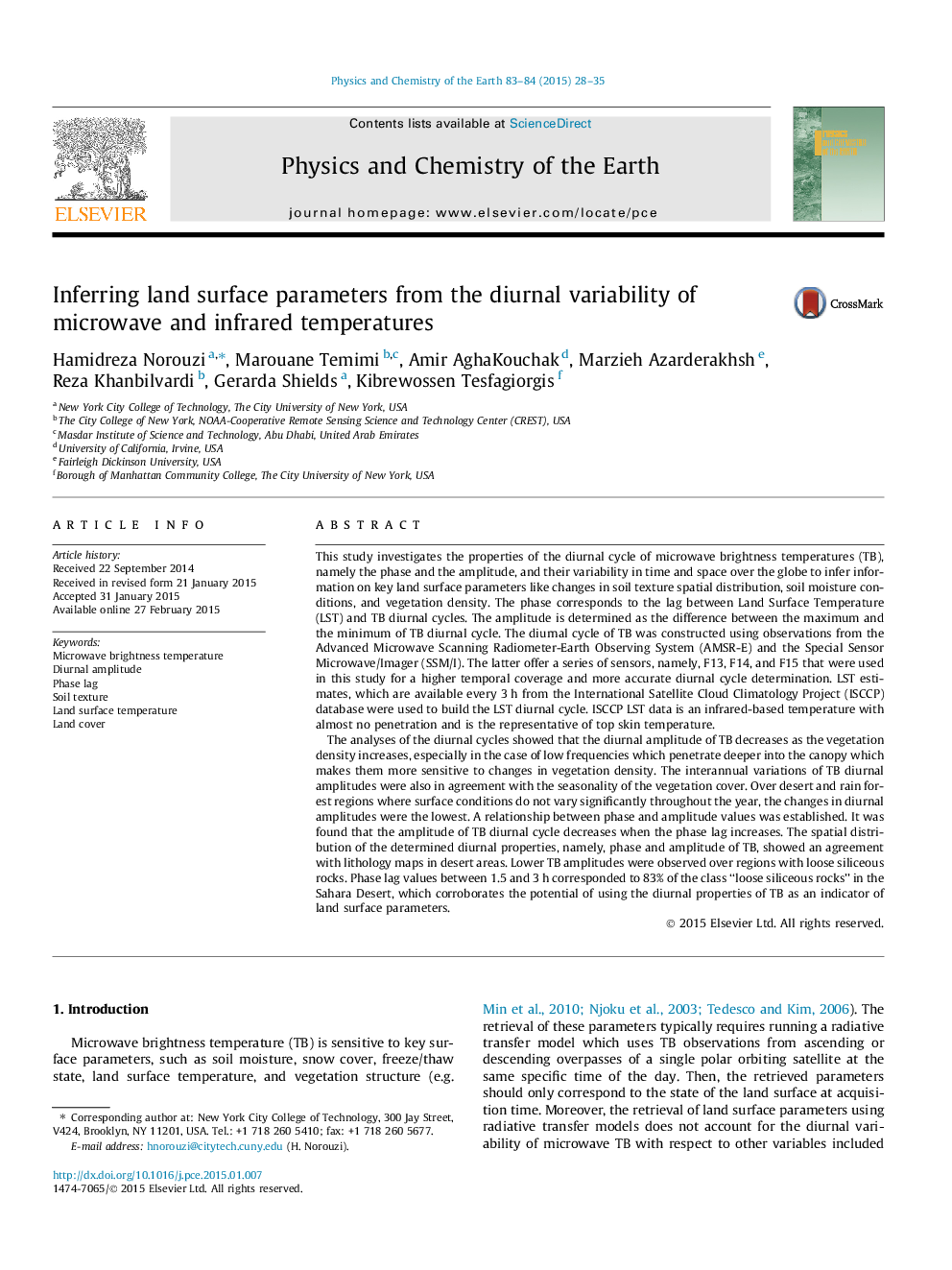| کد مقاله | کد نشریه | سال انتشار | مقاله انگلیسی | نسخه تمام متن |
|---|---|---|---|---|
| 4720887 | 1639351 | 2015 | 8 صفحه PDF | دانلود رایگان |
• Diurnal cycle of microwave brightness temperature (TB) was analyzed.
• The relationship between skin temperature and TB diurnally was investigated.
• TB diurnal cycle properties showed that are related to land cover type.
• The relationship between phase lag and amplitude of TB was investigated.
This study investigates the properties of the diurnal cycle of microwave brightness temperatures (TB), namely the phase and the amplitude, and their variability in time and space over the globe to infer information on key land surface parameters like changes in soil texture spatial distribution, soil moisture conditions, and vegetation density. The phase corresponds to the lag between Land Surface Temperature (LST) and TB diurnal cycles. The amplitude is determined as the difference between the maximum and the minimum of TB diurnal cycle. The diurnal cycle of TB was constructed using observations from the Advanced Microwave Scanning Radiometer-Earth Observing System (AMSR-E) and the Special Sensor Microwave/Imager (SSM/I). The latter offer a series of sensors, namely, F13, F14, and F15 that were used in this study for a higher temporal coverage and more accurate diurnal cycle determination. LST estimates, which are available every 3 h from the International Satellite Cloud Climatology Project (ISCCP) database were used to build the LST diurnal cycle. ISCCP LST data is an infrared-based temperature with almost no penetration and is the representative of top skin temperature.The analyses of the diurnal cycles showed that the diurnal amplitude of TB decreases as the vegetation density increases, especially in the case of low frequencies which penetrate deeper into the canopy which makes them more sensitive to changes in vegetation density. The interannual variations of TB diurnal amplitudes were also in agreement with the seasonality of the vegetation cover. Over desert and rain forest regions where surface conditions do not vary significantly throughout the year, the changes in diurnal amplitudes were the lowest. A relationship between phase and amplitude values was established. It was found that the amplitude of TB diurnal cycle decreases when the phase lag increases. The spatial distribution of the determined diurnal properties, namely, phase and amplitude of TB, showed an agreement with lithology maps in desert areas. Lower TB amplitudes were observed over regions with loose siliceous rocks. Phase lag values between 1.5 and 3 h corresponded to 83% of the class “loose siliceous rocks” in the Sahara Desert, which corroborates the potential of using the diurnal properties of TB as an indicator of land surface parameters.
Journal: Physics and Chemistry of the Earth, Parts A/B/C - Volumes 83–84, 2015, Pages 28–35
